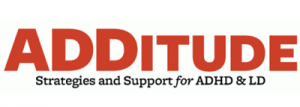Category: Anxiety, Depression & More
Teens, ADHD and Procrastination
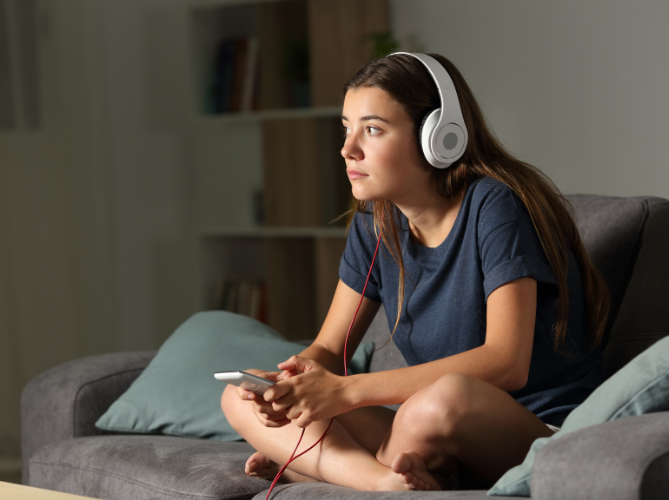 Many teens with ADHD procrastinate and appear to lack self-discipline. Why? Sometimes they have anxiety around how to approach the task, how to complete the task or possible outcomes of failure or rejection. Sometimes they have perfectionistic tendencies that require energy and focus and can delay them wanting to start a task. On the other hand, they may struggle with motivation and/or confidence because they have either given up on themselves or have received messages that the adults in their lives have given up on them. Other times, they can’t come up with any solutions to help them feel motivated for self-discipline. So how do you know what’s really going on with your teen’s ADHD and procrastination, and how can you support them? Let’s dive in.
Many teens with ADHD procrastinate and appear to lack self-discipline. Why? Sometimes they have anxiety around how to approach the task, how to complete the task or possible outcomes of failure or rejection. Sometimes they have perfectionistic tendencies that require energy and focus and can delay them wanting to start a task. On the other hand, they may struggle with motivation and/or confidence because they have either given up on themselves or have received messages that the adults in their lives have given up on them. Other times, they can’t come up with any solutions to help them feel motivated for self-discipline. So how do you know what’s really going on with your teen’s ADHD and procrastination, and how can you support them? Let’s dive in.
Teens with ADHD: Independent?
Teens with ADHD can push back extra hard because they have heard countless times over the years about what they don’t do right. Argh! It takes courage each day to go to school. They often don’t feel successful academically and, even if they are, they are still immersed in challenges.
Teens with ADHD tend to want to do most things themselves. They want autonomy and to put parents on an “as needed” basis. They’re learning more about themselves and are interested in leaning more into their social groups and communities. Yet, they still rely on parents for safety, security and support. Striving for connected independence often works best.

Ask. Collaborate
In this discussion on ADHD and procrastination, I want to highlight the 3rd of my 5 C’s of ADHD Parenting.– Collaboration
Collaboration: Work together with your child and co-parent (if you have one) to find solutions to daily challenges instead of imposing your rules on them.
It can be hard, sometimes really hard, not demanding, “What’s wrong with you? Why can’t you finish a simple worksheet!” These reactions are hurtful and are often based in exhaustion, when our proverbial cups are less than half full. Take time, when you both are feeling calm and ready to talk, to connect with your teen instead, and listen to what they have to say about their thoughts, feelings and experiences.
Ask, as an Unbiased Researcher
“What’s happening so that you can’t do X, Y, Z?”
Now we can look at data and address changes that can help motivate our teen AND help change their inner dialogue.
Understand Shame
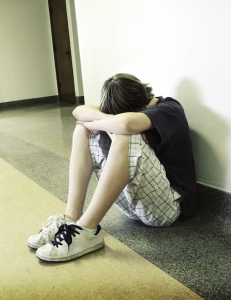
What is the leading cause of wanting to do everything themselves? Shame.
“I was embarrassed that I had a disability. I didn’t want to be seen as someone who needed extra help.”
“Let me do it myself. I don’t like people seeing me as weak.”
You may not see shame. Instead, you might feel their anger, see their tears, or hear yelling about something unrelated.
Procrastination and Initiation
What it the biggest reason teens with ADHD struggle with procrastination? They often have trouble getting started. What may seem easy to us, may seem enormous to people with ADHD. They can be masters of avoidance. “Why start it if I can’t ……?”
Initiation has to do with the size of the task, their interest in the task (dopamine reward), and the level of difficulty for the task. Breaks make a daunting project seem more manageable.
Start Small

Executive functioning challenges that often accompany ADHD and impact procrastination include struggles with initiation, planning and time management. Breaking down assignments into chunks makes tasks seem much more manageable — making them easier to approach and get started. This also helps teens plan out the steps into a series of smaller tasks.
Before starting, prepare for how long they can realistically focus. For instance, ask, “How many examples can you do before you want to throw your book across the room?” Then, they might say, “Five.” Start with the number they say, and then take a break.
Jot down the tasks and notes so you can keep track and not worry about remembering any or all of the steps. Write down how long tasks are expected to take, and reflect on how long they actually took. I highly recommend creating your own personal project planner so you can organize your tasks in a creative, visual structure that works for you.
3 Ways to Make Tasks Seem Smaller:
1. Use a timer.
This method makes the task of completing an assignment in that clocks hands, not the parents. “Cool. Okay, let’s work for 5 minutes and then take a 3 minute break. I will set the timer for the break. When it goes off, you can do 5 more. When you completed an hour, you can have a longer break.“
2. Make lists.
Teens with ADHD and procrastination challenges often have trouble planning what to do — and when. Sit down and ask, “Do you want to do the hardest first, then medium-difficulty, and then easiest? Or easiest first for a sense of success, and then harder, and medium last?” This works well for homework, chores, etc.
3. Make tasks fun!
Listen to music. (Their preferred music is best!) Tell jokes or stories of fun memories. Time yourselves for how fast you can pick up portions of the room, and make a game of it!
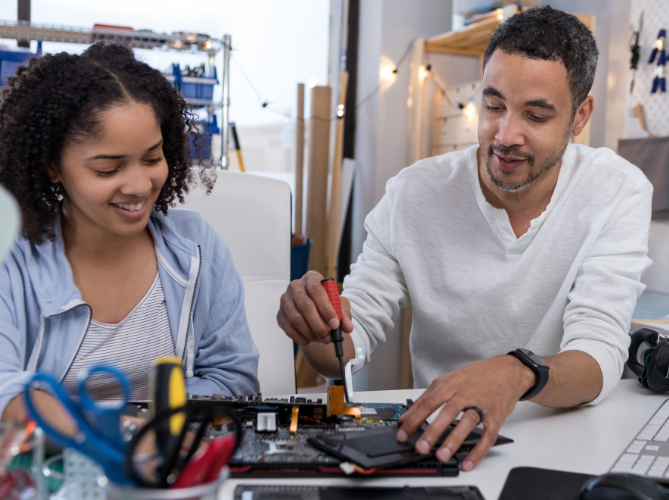
Read more blog posts:
- Parenting Older Teens with ADHD: Land the Helicopter and Focus on Scaffolding
- Personal Project Planners for ADHD Minds: Start managing tasks, time and ideas with this creative tool!
- Want better conversations with your child or teen with ADHD? Use the WAIT-Now Method
Deeper dive: https://drsharonsaline.com/product/motivation/ https://drsharonsaline.com/product/home-seminar/
ADDitude Mag: 5 Ways to Reframe Anxiety for Your Worried Teen
ADHD and Defiance during COVID: What can you do instead of yelling?
 There are so many facets to kids with ADHD. Yes, they are creative, passionate, energetic and smart. Yes, they can also be distractible, impulsive, intense and strong-willed. And yes, COVID is making things that were previously challenging harder in many ways and also adding new hurdles. Because of this new stress, your child or teen might be more angry or pushing back at you more often. These situations, impacted by ADHD and defiance, deteriorate quickly. With all of the frustration, disappointment and isolation children and teens are feeling these days, it’s even harder to self-regulate. Your child may fly off the handle, disrespect you verbally or refuse to listen to what you have to say. What are your options in these volatile times, other than yelling, taking things away or banishing them from your sight? How can you maintain stability in your parent-child relationship and in your home?
There are so many facets to kids with ADHD. Yes, they are creative, passionate, energetic and smart. Yes, they can also be distractible, impulsive, intense and strong-willed. And yes, COVID is making things that were previously challenging harder in many ways and also adding new hurdles. Because of this new stress, your child or teen might be more angry or pushing back at you more often. These situations, impacted by ADHD and defiance, deteriorate quickly. With all of the frustration, disappointment and isolation children and teens are feeling these days, it’s even harder to self-regulate. Your child may fly off the handle, disrespect you verbally or refuse to listen to what you have to say. What are your options in these volatile times, other than yelling, taking things away or banishing them from your sight? How can you maintain stability in your parent-child relationship and in your home?
Kids don’t like emotional explosions, either.
Nobody really likes meltdowns, explosions and arguments, regardless how defensive or nonchalant your child or teen may seem. Kids with ADHD have told me repeatedly that they feel bad about themselves after these outbursts and many parents also regret what they’ve said or done. But, in moments of high emotion, people naturally stop listening and quickly move into fight-flight-or-freeze mode. In this state, whether or not your struggle with ADHD and defiance, you’re not listening. Instead, you’re reacting, and rationality has flown out of the window.
me repeatedly that they feel bad about themselves after these outbursts and many parents also regret what they’ve said or done. But, in moments of high emotion, people naturally stop listening and quickly move into fight-flight-or-freeze mode. In this state, whether or not your struggle with ADHD and defiance, you’re not listening. Instead, you’re reacting, and rationality has flown out of the window.
Expect challenges with ADHD and defiant behavior so you’re prepared to manage them.
Instead of being surprised every time there’s defiance, explosive anger or disrespectful behavior, it’s more useful to expect that these will occur and rely on a strategy for when they do. It’s the resistance and the combativeness that wears families down.
Implement PAUSE to better manage ADHD and defiance at home.
PAUSE: Plan to Accept Understand Set Limits and Encourage
My PAUSE program lays the foundation for making different choices and fostering stability at home. Here’s how it works:

PLAN:
You’ve got to focus on making a plan to cope with the pattern of anger for yourself and your child rather than deal with its changing content. Otherwise, you’ll be playing Whack A Mole nonstop.
In a quiet moment, make a list of what you can easily do to stay grounded. If you are feeling dysregulated, you won’t be able to respond effectively and help your youngster calm down.
Whether it’s going to the bathroom to collect yourself for a few minutes, getting a glass of water or opening a window, break up the action in a non-threatening way. This re-centering needs to be your first, reflexive step to slow down the fast-paced action.
Once you’ve clarified this for yourself, sit with your child and ask them what helps them regroup. Then, ask them how much time they need for this. Write down their options, and post the list in their room or in the kitchen.
ACCEPT:
Stop trying to convince your child or teen of anything. Rather, accept where you both are in a given moment. Remember, they stopped listening the moment that they became activated. What they want is to be seen and heard by you.
Acknowledge what they are saying with reflective listening. “I heard you say this, is that right?” When they feel that you are paying attention, instead of correcting them for cursing at you or justifying why you called the school about their F in English, they will start to settle. It may be tense and uncomfortable, but you can do this. You’ve probably handled a lot of other unpleasant situations impacted by ADHD and defiance before.
UNDERSTAND:

As tough as it can be, empathy is what’s called for when kids, especially those with ADHD, are distressed. Their feelings have overwhelmed their thinking brains. In addition, their weaker executive functioning skills simply cannot manage their heightened emotions. They are acting out because they lack the resources to do anything different in those moments. Neurodivergent kids need caring adults to dig deep and find some compassion rather than exploding about how they should get their act together.
When a child is resistant, oppositional or intransigent, many parents feel desperate to regain authority and establish stability by taking things away from their kids. While punishments may offer short-term relief, they don’t bring long-term success. Avoid saying things like, “I’m taking away your phone for 3 days. You can’t talk to me that way.” Turn it around and say, “You have not earned the privilege of using your phone with that language. When you can go for 3 days without cursing, you’ll get it back. That’s the agreement we have.” Relying on appropriate incentives is what shifts negativity to cooperation.
SET LIMITS:
Our goal is teaching kids with ADHD the executive functioning skills they need for self-regulation, socializing and productivity. It’s a natural part of living to become angry, to want to get your own way and to avoid disappointment. But it’s not okay to be aggressive about these. What we want is our kids to be motivated to make other choices.
Punishment doesn’t teach any lasting skills and rules with fear. Logical consequences, on the other hand, allow you to set limits and use meaningful incentives as motivators. Place “have-to’s” before “want-to’s.” The trick is staying steady in the face of your child or teen’s displeasure and following through. Limits are meaningless if they are not consistently followed. In a family meeting or a quiet moment, make collaborative agreements about actions and words that are unwelcome.
ENCOURAGE:

Once the storm has passed, focus on the present moment. What needs to happen NOW to move beyond its wreckage? You may want to address your underlying concerns and let them know how they have messed up. But will this serve them to learn the skills they need and strengthen your relationship? This is not a time to teach any lessons. The situation is still too raw for your child or teen, and such a conversation may trigger the outburst all over again.
They need encouragement rather than blame at this moment. Talk about the next move to get on with things. Then, later that day or some time tomorrow, casually wonder about the take-aways from what happened. Was there anything each of you regret? How would you like to deal with that type of behavior in the future? This opens conversation, explores options and fosters collaborative engagement.
Managing ADHD and defiance will take time and patience.
Be patient with yourself and your family as you transition to this model. Everybody has a shorter fuse right now, so it may take longer to get this going. That’s okay. It’s one step at a time!
Read more blog posts:
- ADHD and Negativity: Why ADHD kids and teens say “No” and how to help them communicate
- ADHD and Anger in the Family: Manage Outbursts with STOP-THINK-ACT
- Beyond ADHD Pandemic Burnout: How to Help Your Family Regroup and Find Strength
Watch on YouTube:
- ADHD and Oppositional Defiance (ADDitude Mag Q&A with Dr. Saline)
- Anger Management with ADHD (ADDitude Mag Q&A with Dr. Saline)
- How to Get Your Teens to Open Up (WWLP 22 News interview with Dr. Saline)
https://drsharonsaline.com/product/apologies/ https://drsharonsaline.com/product/whats-up-with-all-this-anger/ https://drsharonsaline.com/product/home-seminar/
Beyond ADHD Pandemic Burnout: How to help your family regroup and find strength
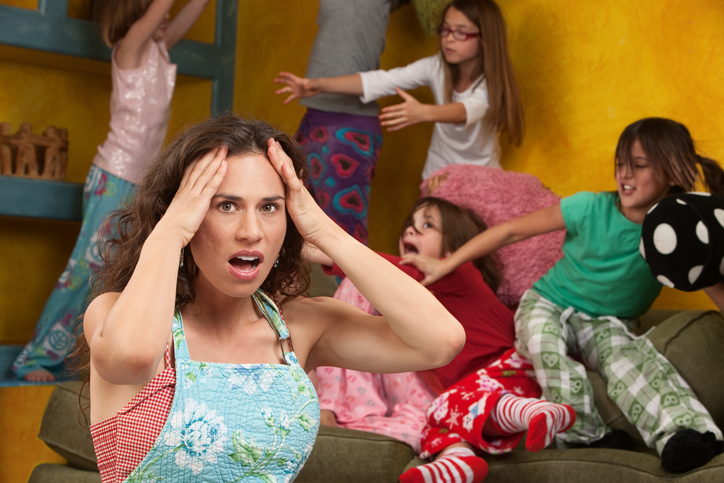 If you are tired of hearing about how you and your family need to bounce back again as 2021 (and 2022) perpetuates the same problems as 2020, you are not alone. One mother of a fifteen year-old boy with ADHD and dyslexia who hates virtual school and is barely passing his courses told me she is “sick and tired of hearing about resilience. I’m drained and he’s depressed. That’s our reality.” She’s experiencing pandemic burnout and is flooded with resilience fatigue: exhaustion from facing daily challenges with resourcefulness and strength that’s just not there. Sound familiar?
If you are tired of hearing about how you and your family need to bounce back again as 2021 (and 2022) perpetuates the same problems as 2020, you are not alone. One mother of a fifteen year-old boy with ADHD and dyslexia who hates virtual school and is barely passing his courses told me she is “sick and tired of hearing about resilience. I’m drained and he’s depressed. That’s our reality.” She’s experiencing pandemic burnout and is flooded with resilience fatigue: exhaustion from facing daily challenges with resourcefulness and strength that’s just not there. Sound familiar?
The myth about resilience
 Resilience is the ability to rebound from difficulties. There’s a myth that resilience is about your character. It actually has as much, if not more, to do with your socioeconomic status, religious and ethnic background. Numerous obstacles such as financial stress, unemployment, bigotry and systemic racism demand resources beyond ‘resilience.’ Similarly, children and adults living with ADHD, persistent mental health issues or physical or learning disabilities struggle daily with challenges that demand effective coping strategies. When we offer platitudes about “digging deep” and “finding your resilience,” we may inadvertently dismiss the validity of these struggles.
Resilience is the ability to rebound from difficulties. There’s a myth that resilience is about your character. It actually has as much, if not more, to do with your socioeconomic status, religious and ethnic background. Numerous obstacles such as financial stress, unemployment, bigotry and systemic racism demand resources beyond ‘resilience.’ Similarly, children and adults living with ADHD, persistent mental health issues or physical or learning disabilities struggle daily with challenges that demand effective coping strategies. When we offer platitudes about “digging deep” and “finding your resilience,” we may inadvertently dismiss the validity of these struggles.
Resilience fatigue: the pandemic burnout is real
Resilience fatigue comes from being depleted mentally, physically and emotionally. It is REAL and particularly now. You, your neurodiverse kids, your extended family and our global community have been stressed and stretched by the pandemic beyond our capacities for months. COVID restrictions, indoor living and social isolation have worn us all down. It’s hard to envision bouncing back to something that we can’t see. Where is the light at the end of this tunnel anyway? For kids with ADHD who live with NOW/NOT NOW brains, seeing the future and focusing on what’s coming next is already tough. If the NOW is unpleasant (whether that’s another day of virtual school, reading Hamlet or cleaning the cat’s litter box), it doesn’t matter how great whatever is happening later may be. There’s just not enough dopamine in their brains to sustain interest and action to get through the unbearable present. Instructing them to buckle up and ride this pandemic out for a distant tomorrow seems really impossible when they’re wiped out.  As parents, your tank is likely on ‘empty’ too. Sadly, it seems like many parents I talk to feel ashamed of their depletion. You go on social media and see how other mothers or fathers manage to be productive, create and maintain activities for their kids, stay fit and prepare gorgeous meals. But, you can’t compare your insides to other people’s outsides. Whatever people are posting is what they want you to believe. Underneath their smiles lie similar struggles to your own.
As parents, your tank is likely on ‘empty’ too. Sadly, it seems like many parents I talk to feel ashamed of their depletion. You go on social media and see how other mothers or fathers manage to be productive, create and maintain activities for their kids, stay fit and prepare gorgeous meals. But, you can’t compare your insides to other people’s outsides. Whatever people are posting is what they want you to believe. Underneath their smiles lie similar struggles to your own.
How to cope with resilience fatigue and pandemic burnout
The antidote to resilience fatigue is compassion–for yourself and for your kids. When people feel resilience fatigue, they’re not only exhausted but they are judging themselves for what they aren’t doing. This is especially true for neurodivergent kids with ADHD, LD or ASD who find virtual school difficult and aren’t doing well. Their current challenges reinforce whatever negative self-talk they already engage in. So, we’ve got to pivot to paying more attention to what is going well enough, adjusting expectations to meet the reality of pandemic life and reducing negative expectations for failure. Follow these steps to regroup and rekindle the spark of strength that you all possess:
1. Start with acknowledging how you feel:
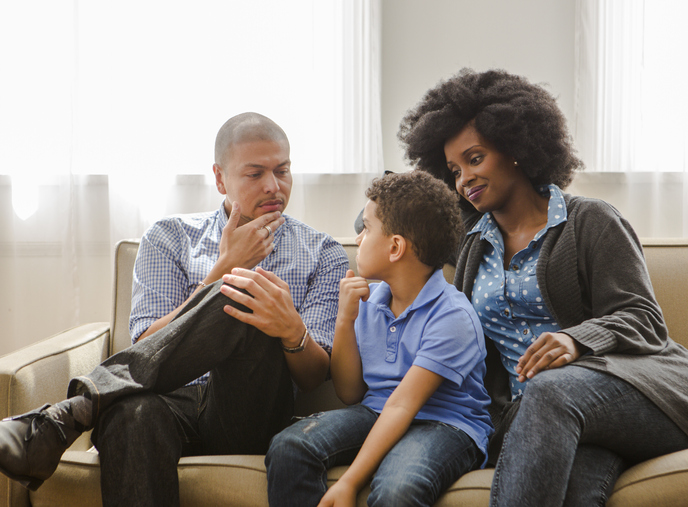 Stop judging yourself and your kids for being the way you are. Resist comparisons with other families and students. When you accept how you and your kids are actually doing–the good, the bad and the ugly, you move from the draining, self-defeating statements of ‘I should’ and live with the soothing balm of refueling statements of ‘I can.’ Coping with resilience fatigue starts with acceptance. Ask your son or daughter with ADHD what is one ‘should’ they tell themselves? How can you work together to transform this statement into a ‘can’?
Stop judging yourself and your kids for being the way you are. Resist comparisons with other families and students. When you accept how you and your kids are actually doing–the good, the bad and the ugly, you move from the draining, self-defeating statements of ‘I should’ and live with the soothing balm of refueling statements of ‘I can.’ Coping with resilience fatigue starts with acceptance. Ask your son or daughter with ADHD what is one ‘should’ they tell themselves? How can you work together to transform this statement into a ‘can’?
2. Change ideas about personal failure:
Resilience fatigue in the midst of this pandemic has very little to individual limitations and everything to do with how the government and health care system let us down. This burnout is a natural process related to the grief, hopelessness and helplessness we all have felt at some time during this past traumatic year. Cut yourself some slack and revamp your expectations for your neurodiverse kids and your family. At your weekly family meeting or during dinner, ask everyone to share one hope for themselves in the coming week. Explore what type of support they may need to bring it to fruition. Then, next week, check in about this and identify another hope. By talking about hopes instead of expectations, there’s a greater chance of a small success. Hope can shift pessimism to positivity.
3. Focus on contentment, not happiness:
 Where happiness is fleeting, contentment reflects ongoing satisfaction. We can’t snap our fingers and erase the COVID world, but we can create a few rituals that make us smile. Have breakfast for dinner once a week. Make popcorn and have a mandatory family movie night. Visit a local place you’ve never been or one that you really love. Host a short zoom dance party in your living room and let each family member pick a song. Ask your friends for ideas of things they’ve been doing to break up the monotony.
Where happiness is fleeting, contentment reflects ongoing satisfaction. We can’t snap our fingers and erase the COVID world, but we can create a few rituals that make us smile. Have breakfast for dinner once a week. Make popcorn and have a mandatory family movie night. Visit a local place you’ve never been or one that you really love. Host a short zoom dance party in your living room and let each family member pick a song. Ask your friends for ideas of things they’ve been doing to break up the monotony.
4. Go backwards to go forwards:
Look back as a family on what has helped you thus far get through the pandemic. Help your kids be as specific as possible. They may need some nudging as recalling positive stuff is tough for many folks, particularly those with ADHD. Write down each idea on a large piece of paper and put it in the kitchen or tv room for everyone to see. When you examine what tools fostered previous resilience, you’ll see the drops of water needed to refill your dry well right in front of you. Pick one to practice for a week, otherwise it might overwhelm you and be self-defeating. One of my favorite mentors says: “When you get to the end of your rope, make a knot and hold on.” Holding on, resting there, resetting and regrouping will help your family cope with resilience fatigue. These practices will help rebuild your collective and personal strengths, too. 
Read more blog posts:
- 5 Self-Care Ideas: Parenting ADHD in a Pandemic
- Managing Uncertainty With Your Family During COVID-19: More than deep breathing
- Post-Pandemic Self-Care for Parents: 12 Tips for Wellness Practices in a New Normal
Deeper dive: https://drsharonsaline.com/product/online-learning-tips-for-parents-bundle/ https://drsharonsaline.com/product/home-seminar/
Teens and Young Adults in the Pandemic
What are some of the adjustments that teens and young adults are making in the pandemic?
Teens and young adults are making many, many adjustments recently. Not only are they unable to see their friends and connect in familiar surrounding, but they are also facing the uncertainty of what comes next. If they are still enrolled in college or high school – virtually, in-person or in a hybrid version – they are leaving behind the familiar structure of home, school and community. Yearning for adulthood, while longed for, can be overwhelming. Those with ADHD are more than likely struggling in social distancing. College is not a college experience. The activities, in person classrooms, clubs, teams, fraternities, etc are gone. The same applies to high school students too. Pods need to be formed, and strictly adhered to versus bumping into friends at the cafeteria. It’s a huge shift in many areas simultaneously.
How can parents and loved ones can help ease the burden?
It’s important that parents and loved ones acknowledge the enormity of this transition and don’t compare their own experiences with those of their children. Things have changed a lot and many young adults struggle under the burden of huge financial debt, social isolation, a high cost of living or the disappointment of living at home, and a tight job market. Staying compassionate, offering to assist them and collaborate on tasks and being available to talk through emotions related to this change is most helpful. Don’t solve issues. Instead, offer your suggestions and avoid getting hurt if they aren’t taken. Young adults often like to figure things out for themselves, which means trial-and-error learning. Sometimes the best support you can give is managing your own frustrations, sharing your feelings without blame or guilt and validating their successes.
Tips for helping young adults and teens adapt a healthy routine in the pandemic
 Having a daily routine offers structure and freedom. It’s critical to set aside a specific period of time for attending classes, school work and applying to jobs each day so these activity has boundaries. These daily activities can become tedious and deflating, particularly in a pandemic. They can spread into all aspects of your life as the list of things you should be doing keeps growing. Eventually, avoidance accompanies discouragement and overwhelm. Talk with your son or daughter about marking off a few hours each day (preferably in the morning to get it over with) for necessary activities. This will assist them in feeling accomplished each day. It will also help them feel competent because they’ve done something in a time frame that they laid out. Then, they can do whatever they want. Help young adults limit screen time. In doing so, advocate for doing other things that interest them and make them feel good. Exercise, time with friends, shopping and cooking–these are all activities that contribute to healthy living. Teach them how to shop, balance their bank account, make a budget and understand their health/car insurances. These skills are not necessarily second-nature, and it’s very common to need extra support in learning them. Keep an eye on your child. If you notice changes, don’t hesitate to reach out to a mental health professional. Even very “strong” people are struggling in this pandemic.
Having a daily routine offers structure and freedom. It’s critical to set aside a specific period of time for attending classes, school work and applying to jobs each day so these activity has boundaries. These daily activities can become tedious and deflating, particularly in a pandemic. They can spread into all aspects of your life as the list of things you should be doing keeps growing. Eventually, avoidance accompanies discouragement and overwhelm. Talk with your son or daughter about marking off a few hours each day (preferably in the morning to get it over with) for necessary activities. This will assist them in feeling accomplished each day. It will also help them feel competent because they’ve done something in a time frame that they laid out. Then, they can do whatever they want. Help young adults limit screen time. In doing so, advocate for doing other things that interest them and make them feel good. Exercise, time with friends, shopping and cooking–these are all activities that contribute to healthy living. Teach them how to shop, balance their bank account, make a budget and understand their health/car insurances. These skills are not necessarily second-nature, and it’s very common to need extra support in learning them. Keep an eye on your child. If you notice changes, don’t hesitate to reach out to a mental health professional. Even very “strong” people are struggling in this pandemic.
- Millennial loneliness and depression
- Reducing teen stress and anxiety during the pandemic
- Dealing with Defiant ADHD Teens and Tweens in this Strange COVID Summer
- How to Get Your Teens to Open Up (WWLP 22 News Interviews Clinical Psychologist Dr. Saline)
How to Transform Anxiety in Kids with ADHD to Excitement
 Do you ever notice how your heart races in similar ways when you’re anxious and when you’re excited? The energy courses through your body and brain, and you feel a type of exhilaration. Of course, it’s more negative for anxiety and more positive for excitement. In both cases, however, our adrenaline is activated because anxiety and excitement really are like two sides of the same coin. Managing both types of these intense, overwhelming reactions is especially taxing for kids with ADHD due to their challenges with impulse control and emotional regulation. How can you help transform anxiety in kids with ADHD into eager anticipation?
Do you ever notice how your heart races in similar ways when you’re anxious and when you’re excited? The energy courses through your body and brain, and you feel a type of exhilaration. Of course, it’s more negative for anxiety and more positive for excitement. In both cases, however, our adrenaline is activated because anxiety and excitement really are like two sides of the same coin. Managing both types of these intense, overwhelming reactions is especially taxing for kids with ADHD due to their challenges with impulse control and emotional regulation. How can you help transform anxiety in kids with ADHD into eager anticipation?
The human brain is wired for negative expectancy.

Negative expectancy has helped us survive for centuries, whether it’s avoiding tigers in the jungle or mastering the art of riding a bicycle. We make mistakes or encounter challenges and learn to adapt, accommodate and overcome. This ability to persist and bounce back is the antidote to anxiety and the foundation of excitement. Anxiety weakens confidence and courage by feeding doubt. Kids don’t believe that things will work out. Based on previous struggles, they expect the worst.
Excitement reflects optimism–hope that something good is going to happen.
Kids are excited for things they look forward to, believe they will enjoy or think they can accomplish. Nervousness can be a precursor to excitement: once a child or teen has learned the skill associated with a new task or situation, they shift from insecurity to anticipation.
With a history of impulsive or distracted behaviors, school difficulties and social challenges, many of your sons and daughters are afraid to hold a positive outlook when faced with something unexpected or different. They’re insecure that they possess the coping skills to successfully meet the novel demands they encounter. They need you to remind them of previous situations when they took a chance, stuck with something hard and succeeded. Working memory challenges for the ADHD brain make this recall particularly difficult in the face of strong negative emotions.
While many fears justify anxiety in kids with ADHD, others may not.
Sometimes it’s a simple act of changing the language that we use to describe our experiences that encourages an alternative perspective. This may sound trite, but our narratives really frame our actions and outlooks. We want to help kids with ADHD shift away from anxiety that globalizes fear and uncertainty. Instead, we want to move them towards a framework of improving inadequate skills. This fosters a growth mindset and helps them pivot towards excitement.
Help kids with ADHD identify feelings of anxiety
 What would it be like to assist your child in noticing the energy they are feeling when they feel nervous or worried? Observe what you see happening with neutral statements like “I see that your voice is getting louder and your face is flushed. Tell me about your concerns.” In addition, ask them about the flip side of the anxiety: “What would it be like if you were excited instead of afraid? What is something you could do differently or what other options can we discuss that might make this situation turn out better than expected?” Every small win, every small shift to a positive perception, is a success.
What would it be like to assist your child in noticing the energy they are feeling when they feel nervous or worried? Observe what you see happening with neutral statements like “I see that your voice is getting louder and your face is flushed. Tell me about your concerns.” In addition, ask them about the flip side of the anxiety: “What would it be like if you were excited instead of afraid? What is something you could do differently or what other options can we discuss that might make this situation turn out better than expected?” Every small win, every small shift to a positive perception, is a success.
As we embrace 2021, following a year of many challenges and much anxiety, I encourage you to commit your family to take a small step towards a new perspective. When someone expresses worry about something where a pivot is possible, investigate the energy, name it and see what happens. Standing at this crossroads, travel down the path of excitement for an alternative.

Read more blog posts:
- Return to School with ADHD: Tips on Helping Anxious Kids Transition Smoothly
- 6 Helpful Tips for Dealing with Rejection Sensitivity Dysphoria
- Raising teens with ADHD: Redefining what ‘success’ means
https://drsharonsaline.com/product/home-seminar/
Attention Talk Radio: ADHD and Social Anxiety: Point/Counterpoint
5 Parent Self-Care Ideas: Parenting ADHD in a Pandemic
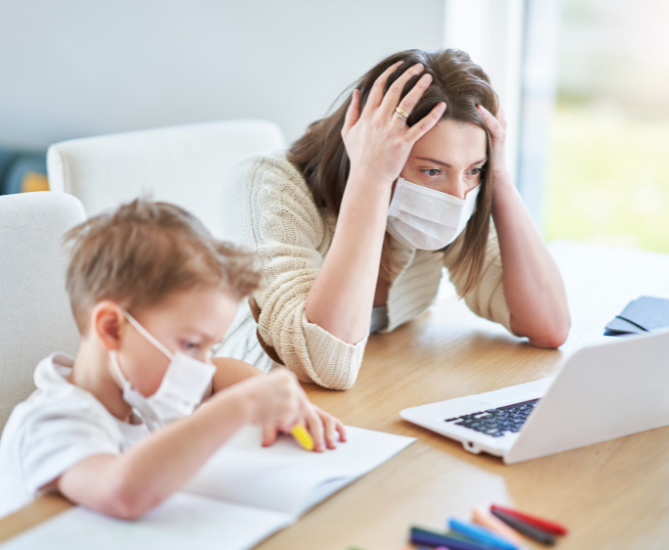 Parent self-care is essential during these times in a pandemic. Parenting an ADHD child or teen can add even more complexity to this difficult time. Children and teens with ADHD have symptoms that make remote learning more difficult due to executive function challenges, and they need more support with this new system. Factoring in self-care to an already full life of work, family and now teaching can be complicated. In fact, it’s usually the first thing to go out the window when people are stressed. But it should be one of the last. You have to take care of yourself so you can take care of others.
Parent self-care is essential during these times in a pandemic. Parenting an ADHD child or teen can add even more complexity to this difficult time. Children and teens with ADHD have symptoms that make remote learning more difficult due to executive function challenges, and they need more support with this new system. Factoring in self-care to an already full life of work, family and now teaching can be complicated. In fact, it’s usually the first thing to go out the window when people are stressed. But it should be one of the last. You have to take care of yourself so you can take care of others.
As you are told to put the oxygen masks on you before your child in order to be a support, the same principle applies here. Exercise, nutrition and emotional support are key elements to helping you run this long, arduous race.
5 Parent Self-Care Ideas during a Pandemic:
1. Get some physical exercise:
Not only will your body and your brain benefit enormously from the endorphins that exercise produces but you will also feel less resentful because you’ve done something good for yourself in the midst of all of the stress in your list. Make a parent self-care list of two types of activities you could actually do: one for home activities and one for safe outside activities. For the first list, include taking the stairs or seated/wall yoga poses to do when you need a break. For the second list, identify times and activities of exercise that you ENJOY and want to do. Decide how often you can do something and put it on your calendar with a reminder alarm. The goal is to use your body to help you let go of stress, not to get into the best shape of your life.
2. Eat well:
Shopping during COVID has become a little more complicated. The good food in your home get eaten first, and what’s left may not be what you desire. You need fuel for this marathon, so make a list of healthy snacks that can stay fresh longer to purchase the next time you go to the grocery store.
 3. Shop local:
3. Shop local:
Consider ordering take out from your community restaurant to bring in a healthy meal. Get your hair done and get a message if you are comfortable with the proximity. Even a box of tasty chocolates can brighten a day. Shopping local is a fun activity for family and parent self-care, but it also provides you with opportunities to support your local small businesses that are likely struggling during the pandemic. In addition, you’re fostering connection with your community as a whole.
4. Practice meditation:
Take some each evening before bed or each morning as you awaken to be with yourself. Guided meditations on Apps such as Headspace, Mindful or Insight Timer can be a great way to start or end your day (or both) with a sense of personal calm, insight and hope.
5. Parent self-care includes connection & support:
Consider getting professional help or joining a support group if you need it to get through this horrible time. Stay connected to others but have some ‘me’ time, too. The Pandemic is a great way to tune into your own needs and discover what you can do for yourself to keep moving forward. Self-care is not selfish. It is a requirement for a happy soul and family.
Learn more:
ADHD and Motivation: How stress reduces productivity and what you can do about it
 In October, the American Psychological Association released the results of its latest Stress in America survey. The report concluded that stress about COVID-19, the economy, racism and politics are threatening the mental health of our country, especially young people. In fact, the survey found that Generation Z students ages 13-17(81%) reported a negative impact on their lives from pandemic-related school changes and 51% said that planning for their future felt impossible. If we add to these results the daily stress that neurodivergent students with ADHD already face with remote/hybrid learning, it’s easy to understand why they are overwhelmed, discouraged and fed up. How can we help manage ADHD and motivation in these unprecedented times?
In October, the American Psychological Association released the results of its latest Stress in America survey. The report concluded that stress about COVID-19, the economy, racism and politics are threatening the mental health of our country, especially young people. In fact, the survey found that Generation Z students ages 13-17(81%) reported a negative impact on their lives from pandemic-related school changes and 51% said that planning for their future felt impossible. If we add to these results the daily stress that neurodivergent students with ADHD already face with remote/hybrid learning, it’s easy to understand why they are overwhelmed, discouraged and fed up. How can we help manage ADHD and motivation in these unprecedented times?
Challenges with ADHD and motivation for kids and teens
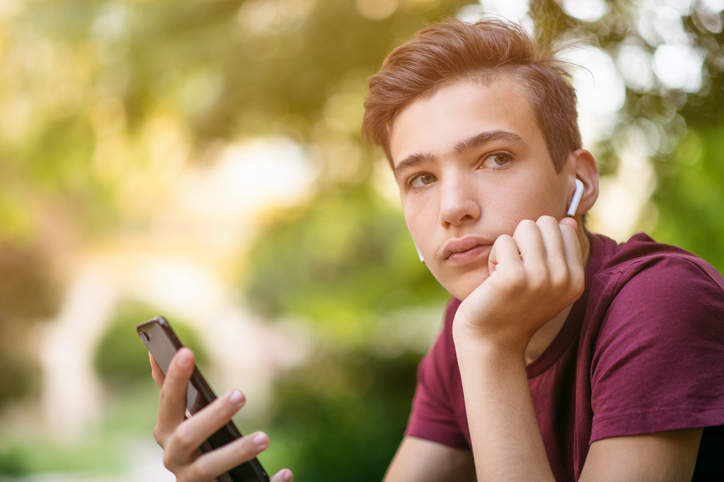
Kids and teens with ADHD have trouble regulating their attention. When they are stressed, it’s even harder to concentrate. Flooded by emotions that they can’t process or break down, their brains resort to fight, flight or freeze mode. Distractibility increases and cooperation goes down while procrastination rules the day.
You’ll see more angry outbursts from your child or teen, bouts of irrational anxiety and flashes of hopelessness and helplessness. As a parent, it’s tough to know what to do that’s helpful in these moments. Threats and punishment may get the job done temporarily, but they fail in the long run. They simply don’t teach the lasting skills about motivation that your student really needs. What can you do instead?
Nothing positive can occur when kids are in the middle of a stress reaction. Yes, they need to start their math worksheet, study for the science test or write that history paper. But, in those moments, no clear thinking occurs. Slow things down and do something different. STOP the action.
What’s most important is that your son or daughter feels listened to and cared for. Feeling heard reduces their stress reaction and the isolation that they feel. Once they are calmer, then you can brainstorm how to approach the task at hand. This is how we motivate kids when they are stuck. We honor their struggle and gently shift their direction.
Reduce stress and help kids with ADHD with motivation by using the 3 R’s: reflect, reassess and recalculate.
1. Reflection:
Listen to what your son or daughter is showing you with their behavior and their words. Rather than interpreting or solving problems, just reflect back what you hear and ask if there’s anything more they want to say. Empathize with their struggle. Believe me, they would rather not procrastinate. Many kids who struggle with ADHD and motivation tell me that they hate this cycle and feel defeated but don’t know how to break out of it.

2. Reassess:
Talk through what’s going on and what realistic options look like. Anxiety and depression related to stress distort our thinking and exaggerate negativity. Concentrate on what is really happening here? The calmer you can be, the easier it will be for your child or teen to collect themselves. There are three types of procrastination:
-
-
-
-
- Perfectionism (“If I can’t get do it just right, why bother?”)
- Avoidance (“I hate doing this, it seems like I’ll never finish so I’m not going to try.”)
- Productive (“I’ll do other stuff that needs to get done but not the main thing because it seems overwhelming or impossible.”)
-
-
-
Which one is your child engaging in and why?
3. Recalculate:

Like your GPS, your student needs to pivot and go another way. How can you assist them in breaking down the task into smaller, more manageable parts? The key to getting started when you have ADHD and motivation challenges is feeling like you can do something and there is an end in sight. What is the bare minimum that your child or teen can do right now? Perhaps you need to reset the threshold today, email the teacher and strategize new options tomorrow.
Use meaningful incentives to teach your son or daughter that effort leads to satisfying accomplishment. Incentives change the conversation from “I can’t” to “Let’s try a small step and earn a desired reward.” This extrinsic motivator helps kids get going until the intrinsic motivation system kicks in–by the late teens or early twenties in neurotypical kids with, as much as a three year delay in young people with ADHD.
Over time, your child will learn to put the have-to’s in front of the want-to’s but this lesson takes patience, practice, scaffolding and collaboration. Work together to determine incentives and then stick with whatever you agreed to. When you are faced with that inevitable pushback from your son or daughter, remember that kids freak out when they feel overwhelmed because they lack appropriate coping skills to deal with challenges they are facing. Take a deep breath and meet them where they are, offering love and support for the scary place they are in.
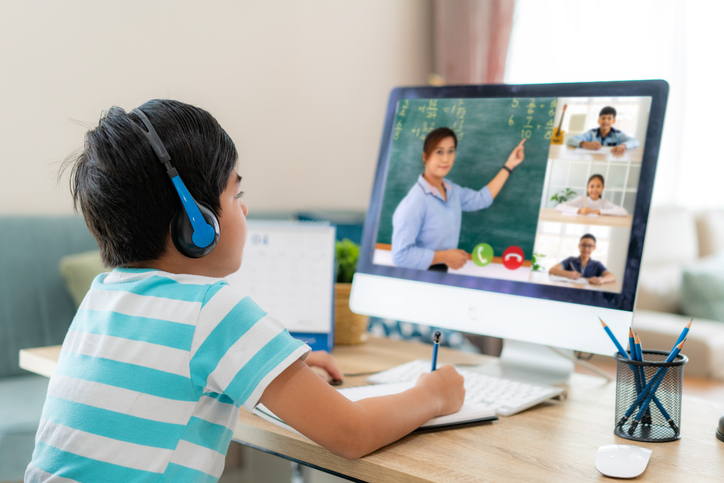
Source: Stress in America 2020 survey signals a growing national mental health crisis. (n.d.). Retrieved December 08, 2020, from https://www.apa.org/news/press/releases/2020/10/stress-mental-health-crisis.
Read more blog posts:
- Perfectionism and ADHD: Why ‘good enough’ is better than perfect
- Personal Project Planners for ADHD Minds: Start managing tasks, time and ideas with this creative tool!
- 5 Tips to Uplevel Your Spring Cleaning and Decluttering
Watch on Dr. Sharon Saline’s YouTube Channel:
-
- Initiating and Completing Tasks with ADHD (ADDitude Mag ADHD Q&A with Psychologist Dr. Sharon Saline)
- Planning and Prioritizing with ADHD (ADDitude Mag ADHD Q&A with Dr. Sharon Saline)
- Kids Feeling Bogged Down? Here are 4 Tips to Boost Motivation (WWLP 22 News interview with Dr. Saline)
Deeper dive: https://drsharonsaline.com/product/motivation/ https://drsharonsaline.com/product/hw-hassle-vid/ https://drsharonsaline.com/product/home-seminar/

